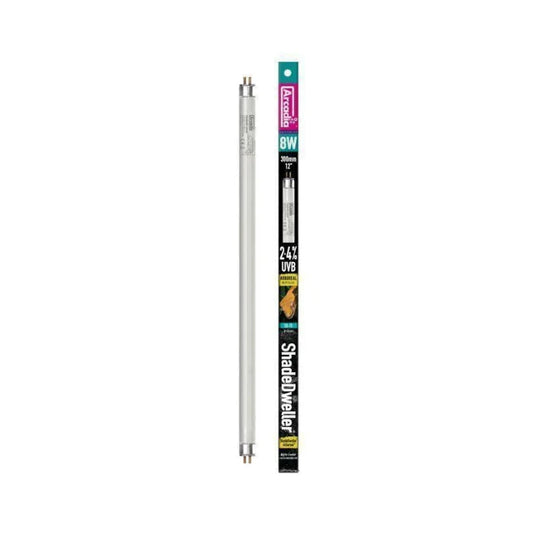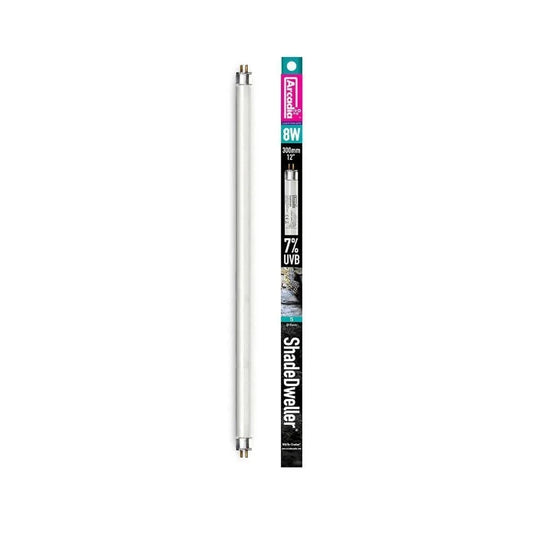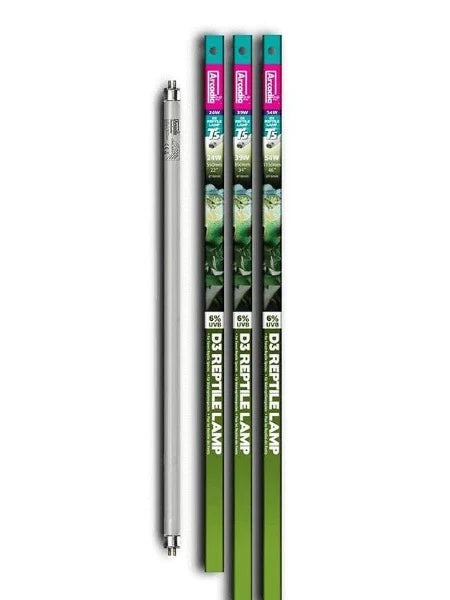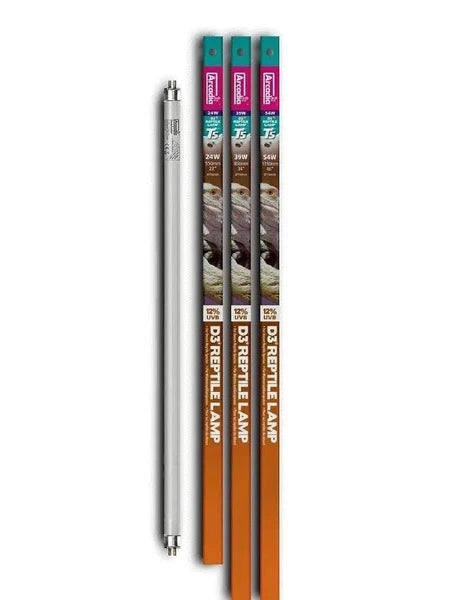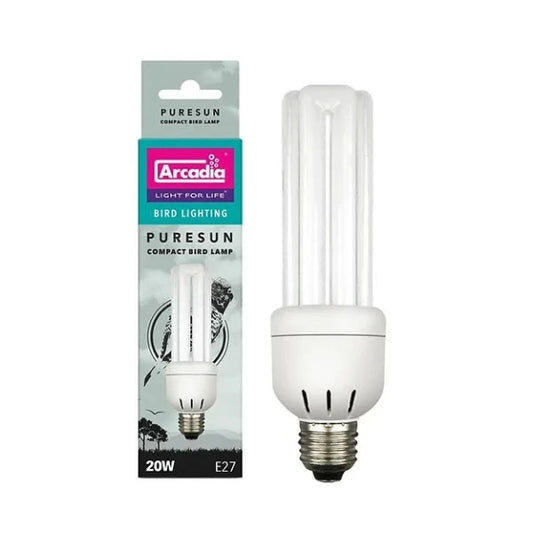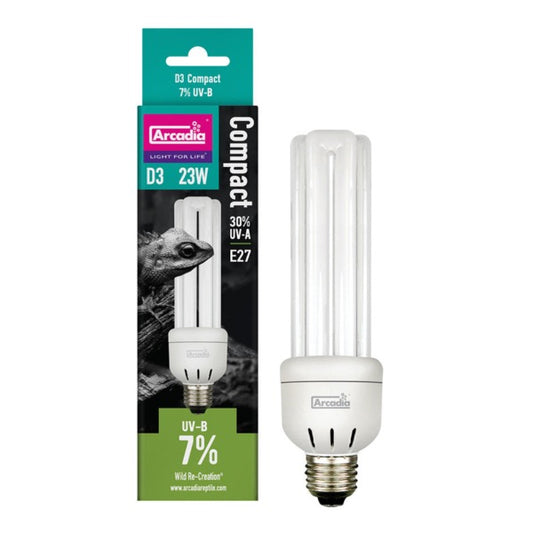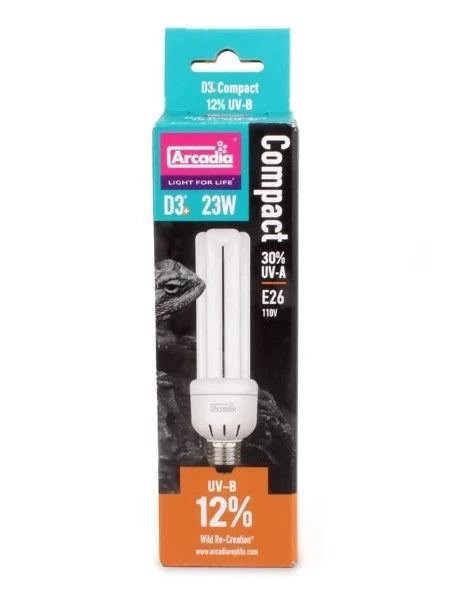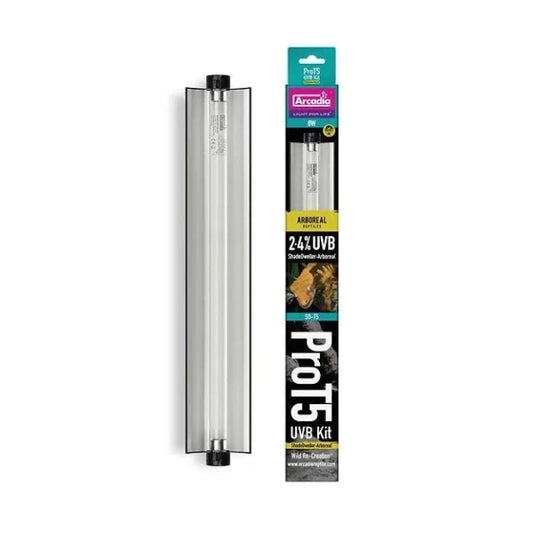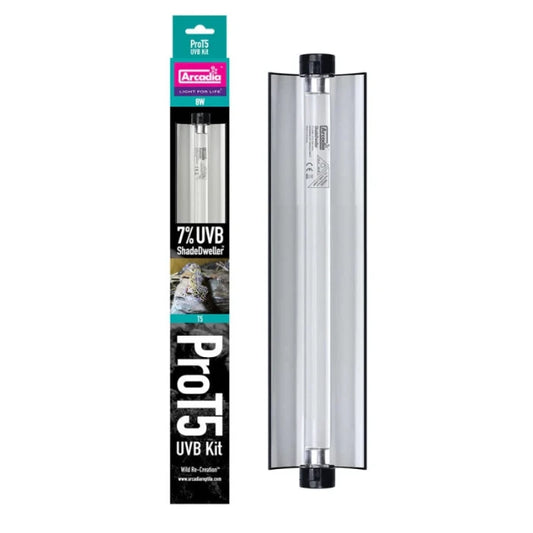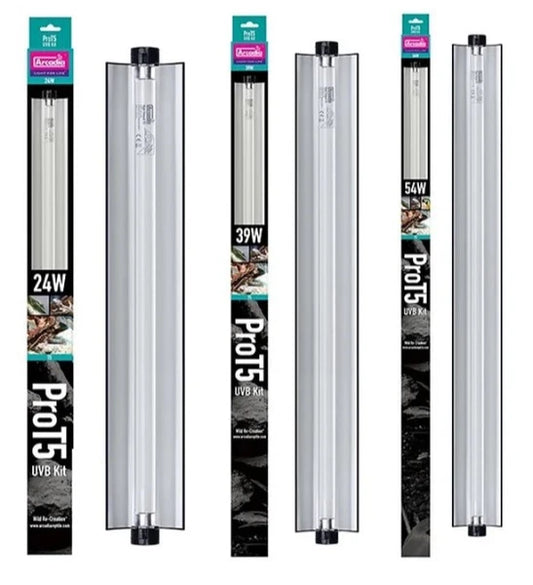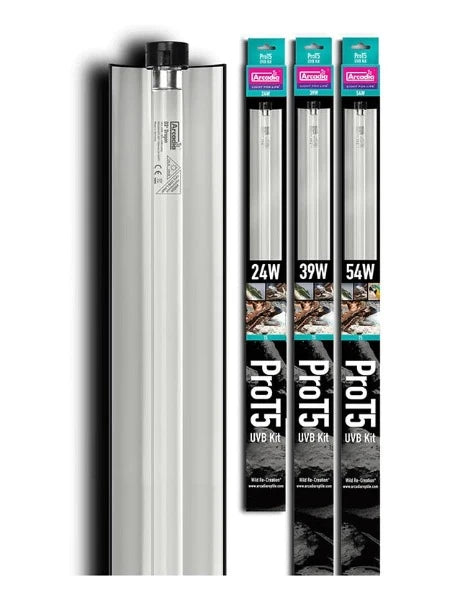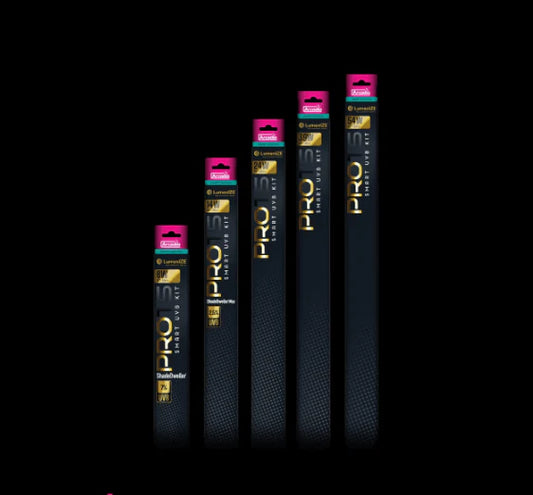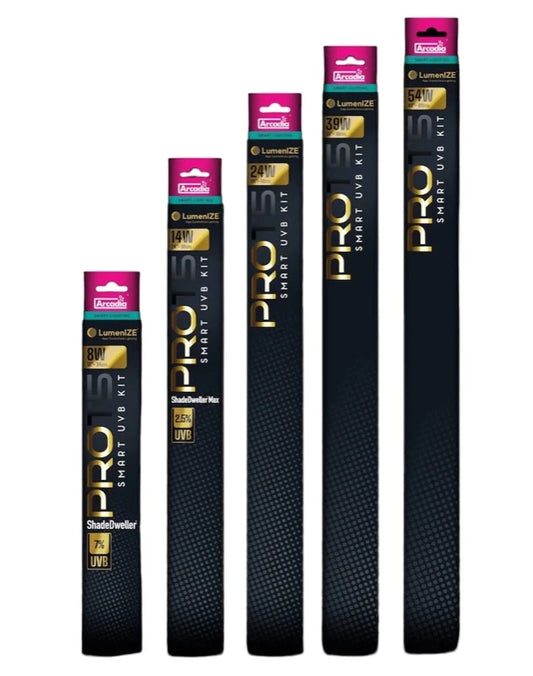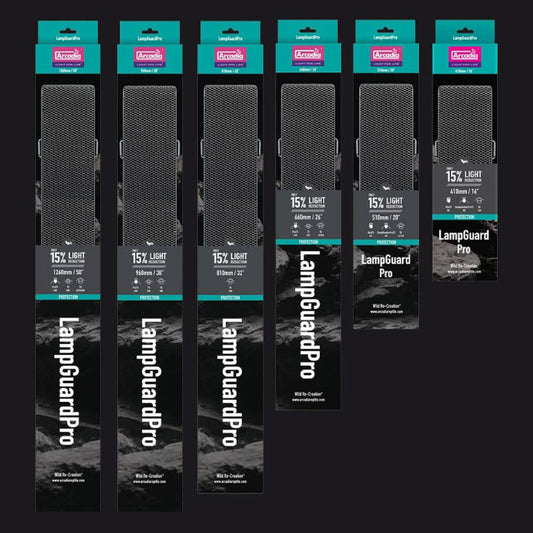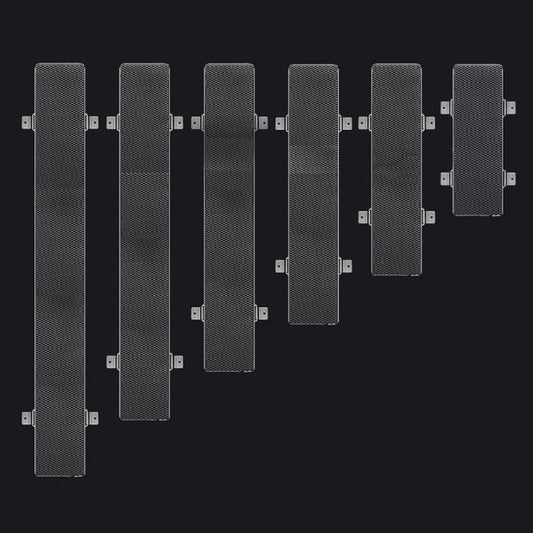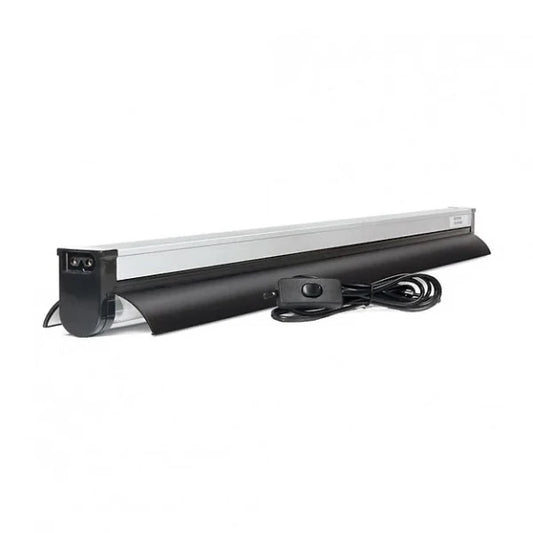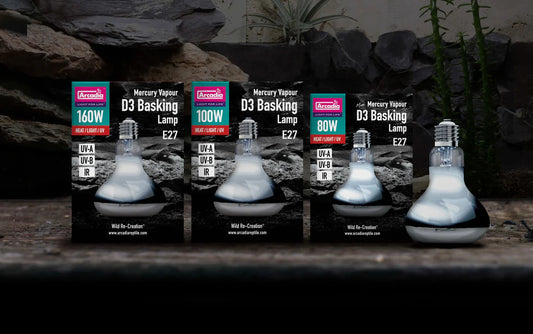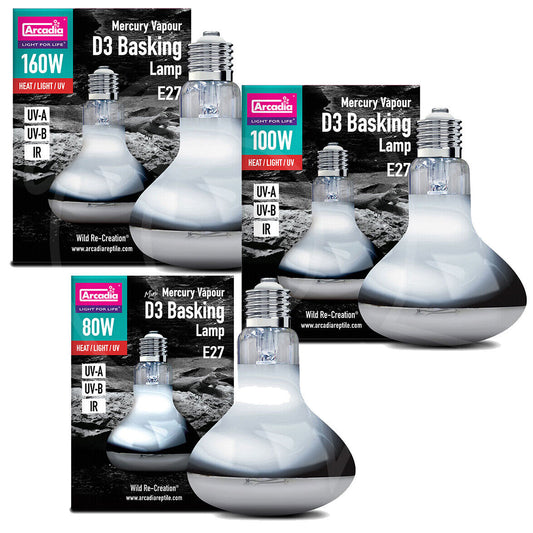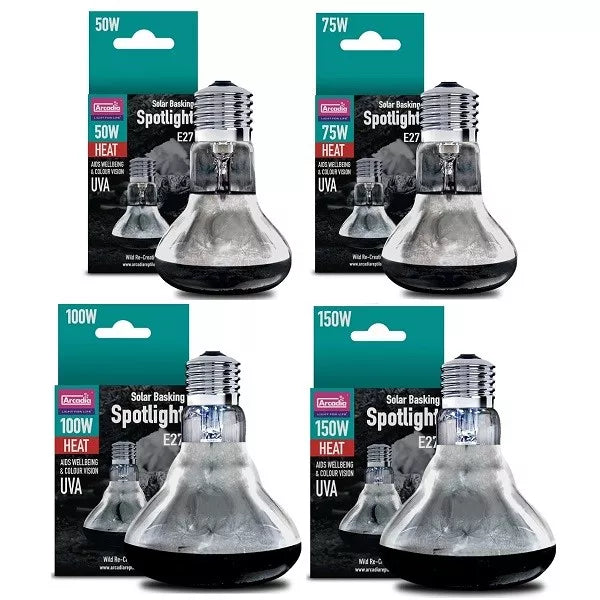Collection: UVB lighting
Reptile UVB lighting is a critical component in creating a healthy and thriving environment for captive reptiles. UVB light is a specific spectrum of ultraviolet light that plays a crucial role in the synthesis of vitamin D3 in reptiles. This vitamin is essential for calcium metabolism, aiding in proper bone development, growth, and overall health.
In the wild, reptiles receive UVB rays from the sun, but in captivity, replicating this natural light is necessary to prevent deficiencies and health issues. UVB lighting fixtures designed for reptiles emit this specific wavelength of ultraviolet light, often in conjunction with UVA light, which supports the reptiles' overall well-being and natural behavior.
These specialized UVB bulbs or lamps are available in different strengths and types to suit various reptile species' needs. Mercury vapor bulbs, fluorescent tubes, and compact fluorescent bulbs are among the commonly used UVB lighting options. The intensity and distance of UVB exposure vary depending on the species, so it's crucial to research and provide the appropriate lighting for the specific reptile species housed in the enclosure.
Proper placement and duration of exposure to UVB light within the reptile enclosure are crucial. It's essential to follow manufacturer guidelines and recommended distances between the bulb and the basking spot or the reptile's location to ensure they receive adequate UVB without causing harm from overexposure.
Regular replacement of UVB bulbs is necessary as their effectiveness diminishes over time, even if they continue to emit visible light. Monitoring and maintaining the appropriate UVB lighting levels, in combination with a suitable diet, contribute significantly to the reptile's overall health, growth, and vitality in captivity.
In summary, providing the right UVB lighting is a vital aspect of captive reptile care, as it mimics the sun's natural rays and supports the reptile's essential physiological processes, ultimately promoting their well-being and longevity in captivity.
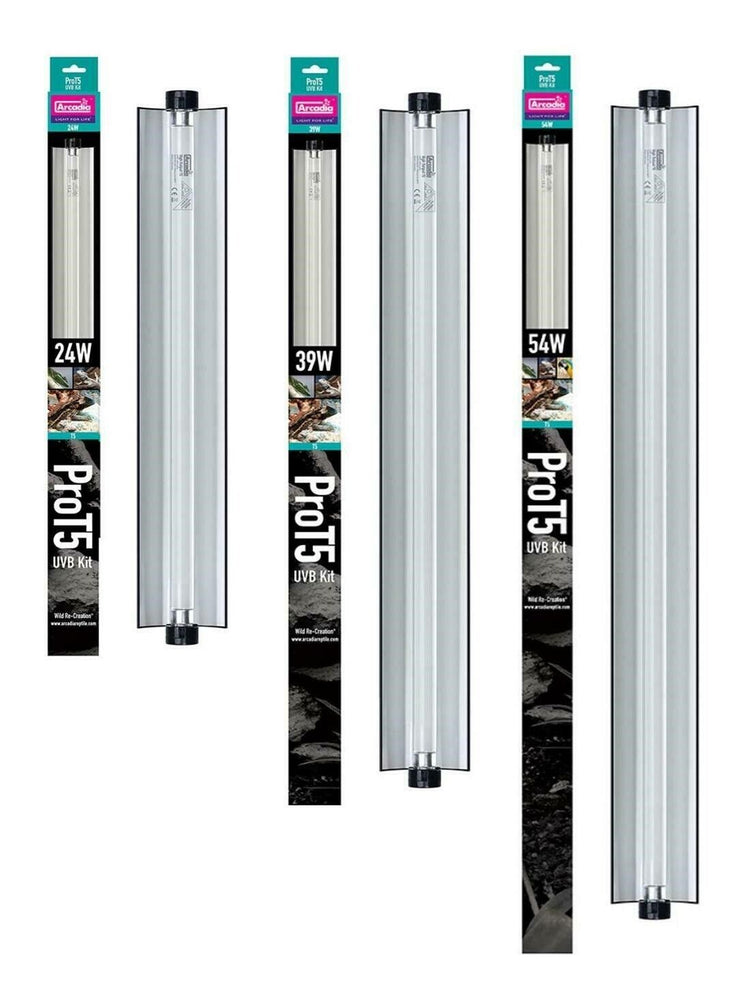
-
Arcadia 8w 2.4% T5 UVB Globe
Regular price $49.00 AUDRegular priceUnit price / per -
Arcadia 8w 7% T5 UVB Globe
Regular price $49.00 AUDRegular priceUnit price / per -
Arcadia 6% T5 UVB
Regular price From $59.00 AUDRegular priceUnit price / per -
Arcadia 12% T5 UVB
Regular price From $59.00 AUDRegular priceUnit price / per -
Arcadia 14% T5 UVB
Regular price From $69.00 AUDRegular priceUnit price / per -
Arcadia Compact UVB 2.4% Pure Sun
Regular price $65.00 AUDRegular priceUnit price / per$84.00 AUDSale price $65.00 AUDSale -
Arcadia Compact UVB 7%
Regular price $55.00 AUDRegular priceUnit price / per -
Arcadia Compact UVB 12%
Regular price $58.00 AUDRegular priceUnit price / per$79.00 AUDSale price $58.00 AUDSale -
Arcadia T5 UVB Kit 8 watt Shade Dewller 2.4%
Regular price $139.00 AUDRegular priceUnit price / per$149.00 AUDSale price $139.00 AUDSale -
Arcadia T5 UVB Kit 8 watt Shade Dewller 7%
Regular price $139.00 AUDRegular priceUnit price / per$149.00 AUDSale price $139.00 AUDSale -
Arcadia 6% T5 UVB Kit
Regular price From $169.00 AUDRegular priceUnit price / per -
Arcadia 12% T5 UVB Kit
Regular price From $169.00 AUDRegular priceUnit price / per -
Arcadia 14% T5 UVB Kit
Regular price From $169.00 AUDRegular priceUnit price / per -
Arcadia LumenIZE Pro T5 8w 7% UVB kit
Regular price $189.00 AUDRegular priceUnit price / per$199.00 AUDSale price $189.00 AUDSale -
Arcadia LumenIZE Pro T5 24w UVB kit
Regular price $239.00 AUDRegular priceUnit price / per$279.00 AUDSale price $239.00 AUDSale -
Arcadia LumenIZE Pro T5 39w UVB Kit
Regular price $279.00 AUDRegular priceUnit price / per$329.00 AUDSale price $279.00 AUDSale -
Arcadia LumenIZE Pro T5 54w UVB Kit
Regular price $299.00 AUDRegular priceUnit price / per$349.00 AUDSale price $299.00 AUDSale -
Arcadia Lamp Guard Pro
Regular price From $50.00 AUDRegular priceUnit price / per$59.95 AUDSale price From $50.00 AUDSale -
EcoTech T5 UVB Fitting
Regular price From $79.00 AUDRegular priceUnit price / per$89.00 AUDSale price From $79.00 AUDSale -
Arcadia D3 Basking Lamp - Mercury Vapour
Regular price From $108.00 AUDRegular priceUnit price / per$120.00 AUDSale price From $108.00 AUDSale
-

Enclosures
Reptile enclosures serve as the primary habitat for captive reptiles, providing a...
-

Reptile Racks
Reptile racks are specialized housing systems designed to efficiently and compactly house...
-
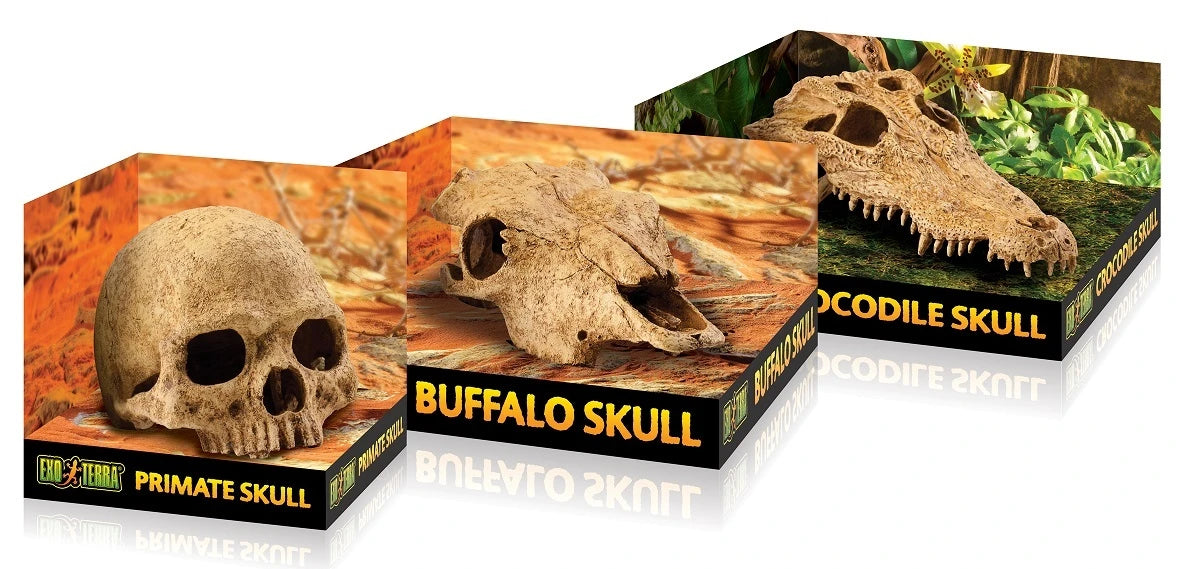
Reptile Decorations
Reptile accessories encompass a wide array of items designed to enhance the...

